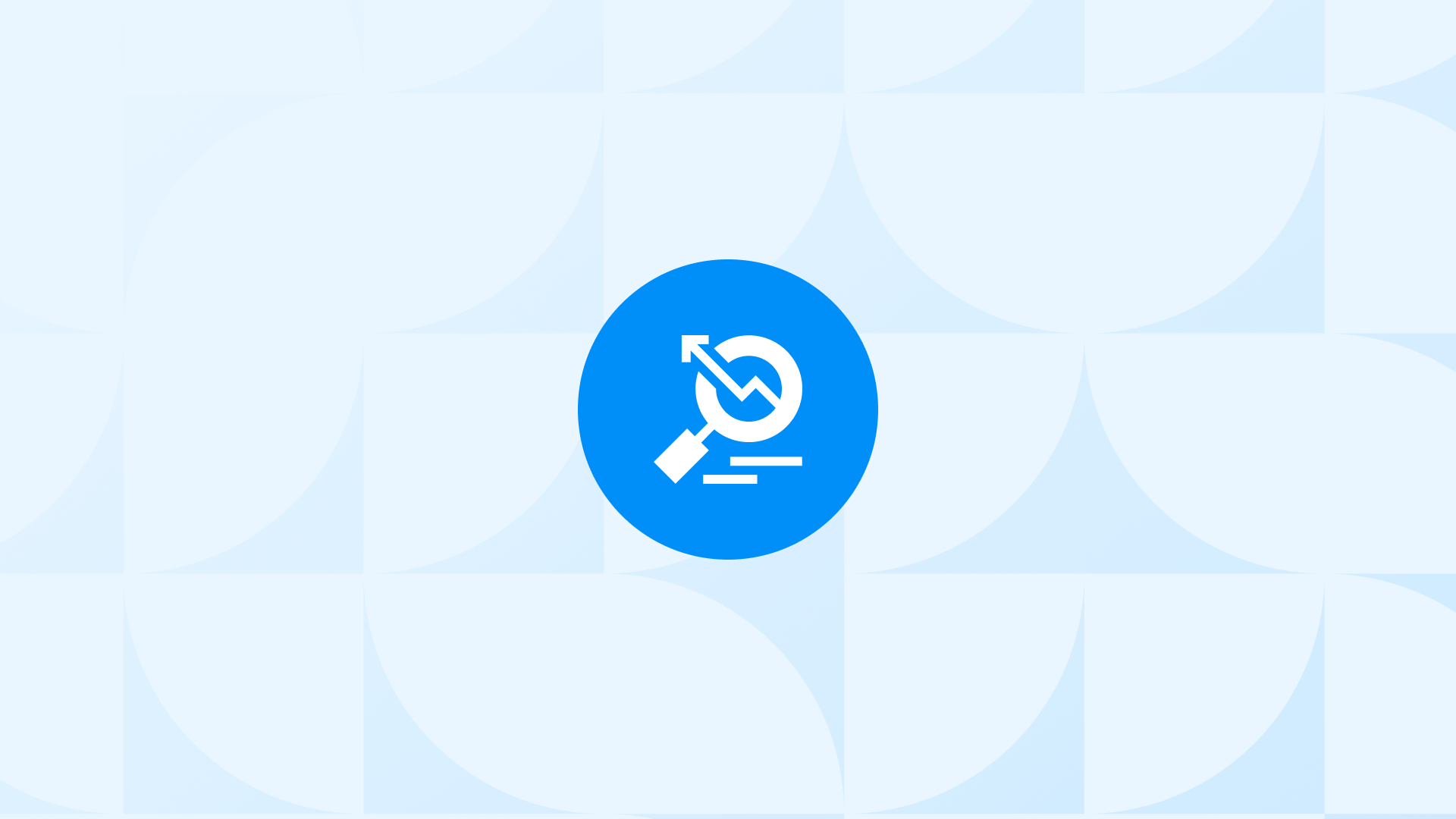The conversion rate is a critical metric in Google Analytics 4, representing the percentage of website visitors who take a desired action, such as making a purchase, subscribing to a newsletter, or any other significant action that you define as a conversion.
In GA4, there are two main types of conversion rates for Ecommerce that you need to be familiar with: Session Conversion Rate and User Conversion Rate.
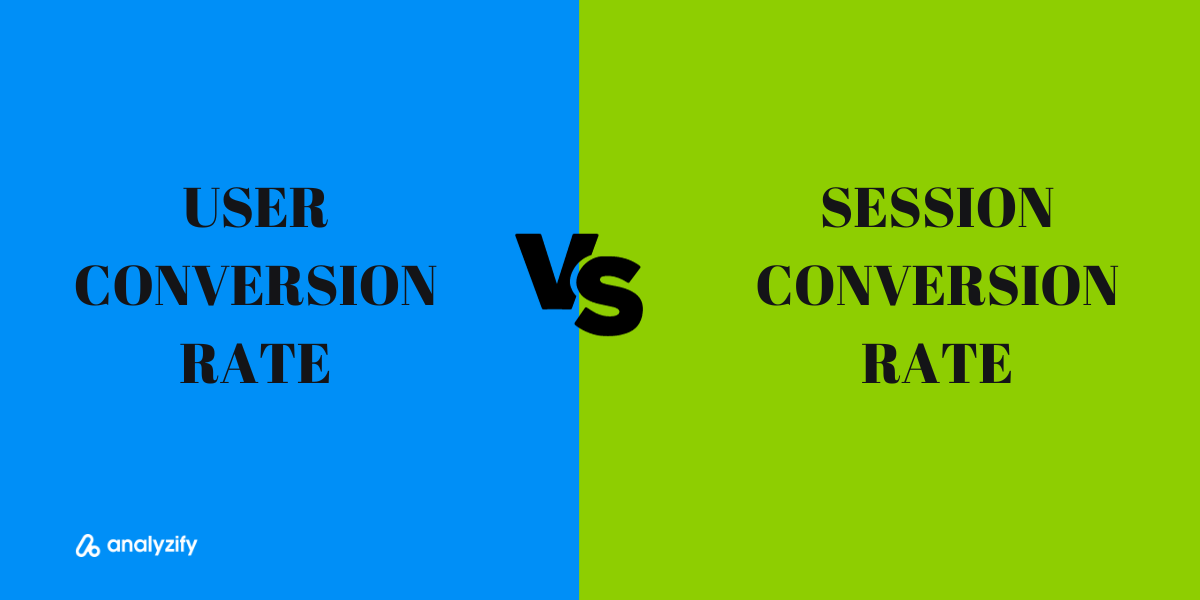
🎉 Bonus Content: Explore the top Shopify conversion tracking apps to get clear insights into how customers interact with your store.
Session Conversion Rate in GA4
The Session Conversion Rate in Google Analytics 4 (GA4) is calculated by dividing the number of sessions with at least one conversion event by the total number of sessions.
This metric provides insights into the immediate effectiveness of your sessions in driving conversions.
How to Find Session Conversion Rate for Ecommerce in GA4
To find and analyze conversion rates in GA4, follow these steps:
Step 1) Access GA4: Log into your Google Analytics account and navigate to GA4.
Step 2) Go to ‘Explore’: On the left sidebar, click on ‘Explore’.
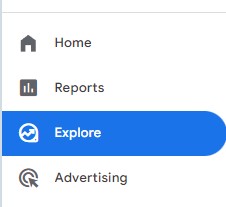
Step 3) Select or Create a Report: Choose an existing exploration or click on ‘Free Form’ to create a new report.To set up your report for conversion rate analysis, add relevant dimensions and metrics:
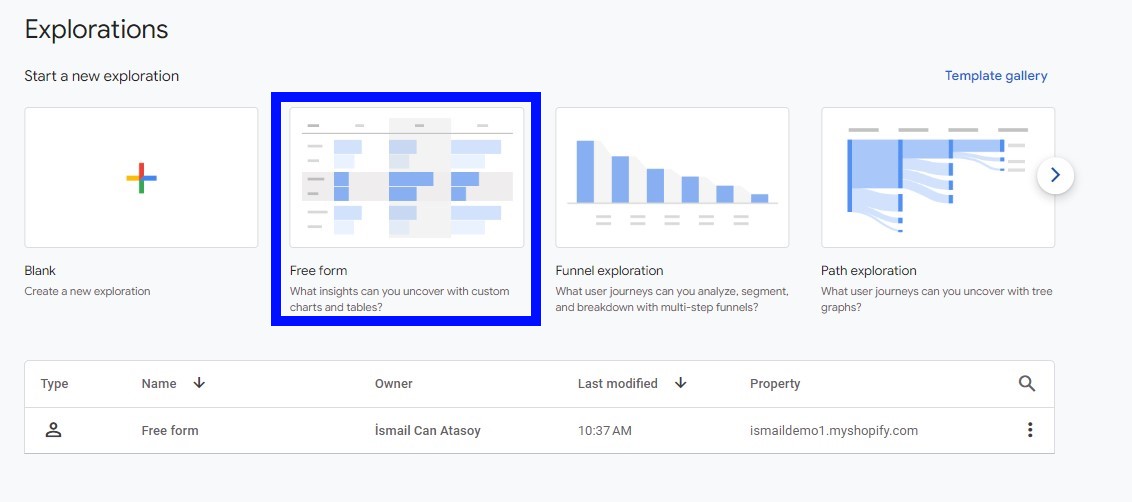
Step 4 ) Add Dimensions
Go to the ‘Dimensions’ section and click on ‘+’.
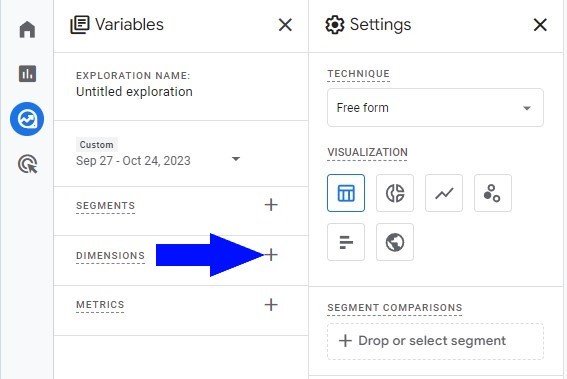
Search and select ‘Session Source / Medium’ or ‘Session Default Channel Grouping’. Click ‘Import’ to add the dimension to your report.

Step 5) Add Metrics
Navigate to the ‘Metrics’ section and click on ‘+’.
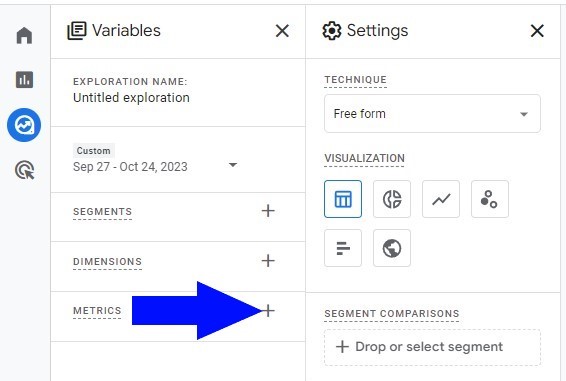
Select and import ‘Sessions’, ‘Total Users’, ‘Conversions’, ‘Session Conversion Rate’.
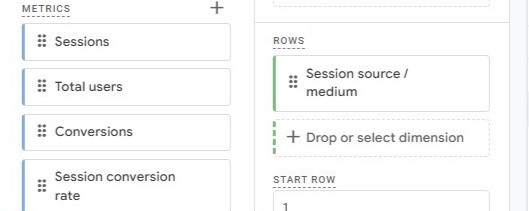
Double click on these dimensions and metrics to add them to the report.
Understanding Session Conversion Rate in GA4 with Examples
Example 1
- User Journey: A user initially discovers your website through an organic Facebook post and later revisits it via a direct link, eventually making a purchase during the third visit.
- Calculation: 1 conversion / 3 sessions = 33.33% Session Conversion Rate.
- Insight: The conversion in the third session may suggest the necessity of multiple interactions before a user decides to convert, highlighting the importance of a multi-channel engagement strategy.
Example 2
- User Journey: Another user accesses your website through a sponsored Instagram story and makes a purchase right away. The user returns through a customer referral link but does not convert in the second session.
- Calculation: 1 conversion / 2 sessions = 50% Session Conversion Rate.
- Insight: The immediate conversion demonstrates the effectiveness of Instagram stories as a conversion driver, while the lack of conversion in the second session might indicate a need to optimize post-purchase engagement or referral incentives.
Overall
- When combining the two examples, we have a total of 5 sessions and 2 conversions, leading to a 40% Session Conversion Rate.
NOTE: It’s important to consider the context of these metrics, as the journey to conversion can vary significantly between users, and focusing solely on session conversion rate might overlook other vital aspects of user engagement and experience.”
This is where User Conversion Rate comes into play. This metric looks at users instead of sessions.
🎉 Bonus Content: You can take a look at the top Shopify Google Tag Manager (GTM) apps to better track your conversions.
User Conversion Rate in GA4
Focusing on individual users, the User Conversion Rate in GA4 is calculated by dividing the number of users who have triggered any conversion event by the total number of users. This metric offers a broader perspective, considering user behavior over multiple sessions.
How to Find User Conversion Rate in GA4
We follow the same steps that we outlined above for calculating the “session conversion rate” when finding the “user conversion rate”. The only difference is that you need to add “user conversion rate” to the metrics section as well.
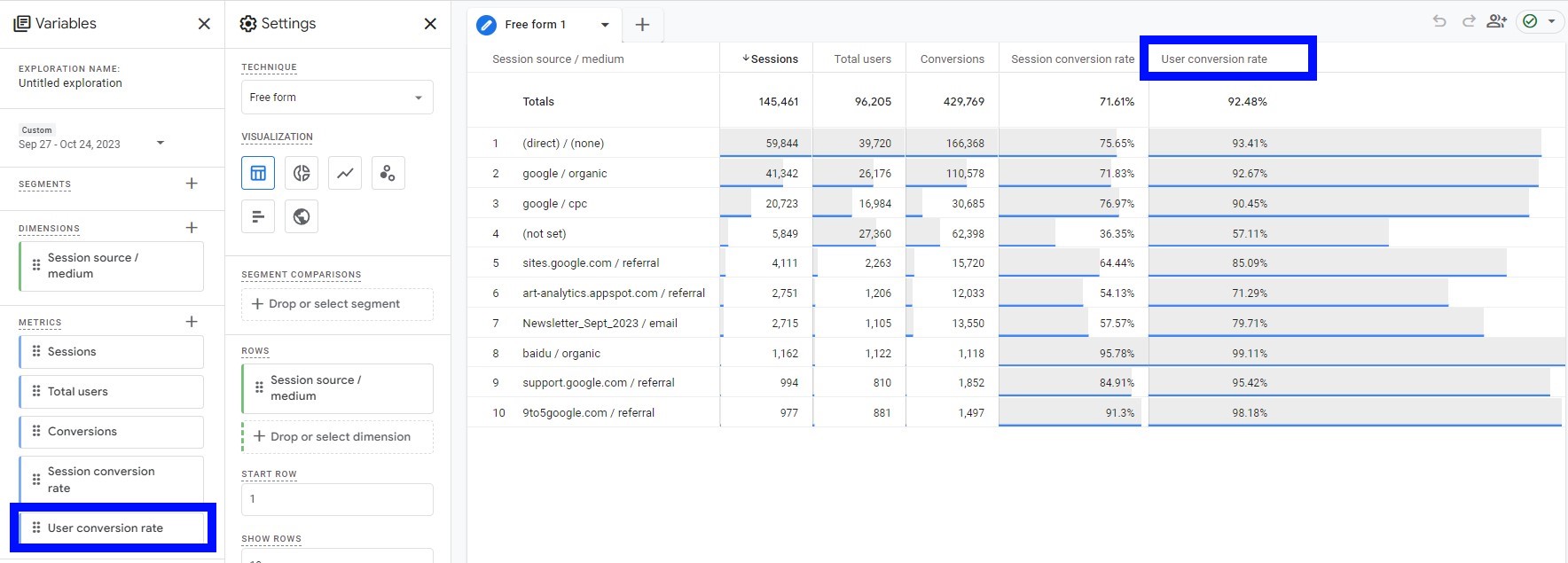
Understanding User Conversion Rate for Ecommerce with Examples
Example 1
- User Journey: A shopper comes across your online shop via a Google organic search, browses through several product pages, but leaves without making a purchase. A week later, they return through a retargeting ad but still do not convert.
- Calculation: 0 users converted / 1 user = 0% User Conversion Rate.
- Insight: Despite engaging with the site in multiple sessions through different channels, the shopper didn’t convert. This might indicate a need to review the user experience or the effectiveness of the retargeting ads.
Example 2
- User Journey: A potential buyer finds your ecommerce site through a referral link from a friend, adds items to the cart but leaves without purchasing. They later click on an abandoned cart email and complete the purchase in this second session.
- Calculation: 1 user converted / 1 user = 100% User Conversion Rate.
- Insight: The abandoned cart email played a crucial role in bringing the user back to complete the purchase, highlighting its effectiveness in recovering potentially lost sales.
Overall
- Combining the two examples, we have a total of 2 users with 1 conversion, resulting in a 50% User Conversion Rate. This metric highlights the importance of multi-channel engagement and the effectiveness of targeted recovery strategies like abandoned cart emails.
However, it’s crucial to delve deeper and understand the nuances of each user journey to optimize the conversion path effectively.
If you want to dig deeper and be more specific, you should check out how to find your collection/category conversion rate in GA4.
Analyzing and Interpreting Conversion Rate in GA4
Understanding these metrics is key to optimizing your digital marketing strategies:
- Use Session Conversion Rate for insights into immediate conversion effectiveness, ideal for businesses where conversions typically happen in a single session.
- Use User Conversion Rate for a broader perspective on user engagement, especially if your business often sees conversions after multiple interactions.
- Compare Both Metrics: Identifying discrepancies between these two metrics can highlight areas for improvement and guide strategic adjustments.
If you want to better understand Goals & Conversions in GA4 you can watch our video!
Conversions in GA4
How to Increase Conversion Rate for Ecommerce in GA4
Navigating through the complexities of digital marketing, ads, and SEO requires vigilance and a deep understanding of analytics. Sometimes, despite doing everything seemingly right, the expected increase in revenue remains elusive.
Let’s explore typical issues in Google Analytics 4 accounts that may go unnoticed and how to address them proactively.
1) Unsuccessful Product Promotions
Issue: Promoting products that don’t convert can significantly lower your conversion rate.
Common Problems: These products may be out of stock, understocked, or priced uncompetitively.
Solution: Regularly audit the products you promote across various channels. Ensure that they are in stock, available in a wide range of sizes, and competitively priced.
2) Page Load Speed and Its Impact
Issue: High loading speeds on crucial landing pages can deter potential customers.
Statistical Insight: For every second delay in mobile page load, conversions can fall by up to 20%.
Solution: Monitor the loading times of your landing pages, especially during new campaign launches. Address any technical issues promptly to prevent loss of potential sales.
3) Internal Site Search and User Satisfaction
Issue: A high exit rate from internal site search results can indicate dissatisfaction and lead to lower conversions.
Insight: Customers who use site search are more likely to convert and make a purchase.
Solution: Regularly review the exit rates of search terms. If they are higher than industry standards, this could indicate an issue with the relevancy of search results. Adjust your site search settings and content accordingly.
4) Diversifying Promotion Channels
Issue: Relying on a single promotional channel can limit your visibility and reduce conversion rates.
Solution: Ensure your landing pages receive traffic from multiple channels and include both new and returning users in your audience targeting.
5) Product Visibility in Ads
Issue: Promoting a limited range of products can decrease potential conversions.
Solution: Regularly review and adjust your ads to ensure a broad range of products is being promoted. Be vigilant about any platform issues that might restrict product visibility.
6) Addressing Payment Referral in GA4
Issue: Incorrect GA4 configuration can lead to lost original traffic source data and misattributed transactions.
Solution: Ensure your GA4 property is correctly configured to preserve original traffic source data, even after a user completes a transaction through a payment system.
7) Identifying UX Issues in the Purchase Funnel
Issue: Problems at any stage of the user’s shopping experience can lead to a drop in conversion rates.
Solution: Regularly audit each step of the user journey, from product view to purchase, and address any identified issues promptly.
We highly recommend taking a look at our comprehensive guide on offline conversions!
You should also check out our comprehensive guide to GA4 ecommerce funnels to create custom funnels and get better funnel reports.
Conclusion
Mastering the art of conversion tracking in GA4 is essential for any digital marketer looking to optimize their online presence and drive conversions.
By understanding and effectively analyzing Session and User Conversion Rates, you can gain valuable insights into user behavior, tailor your marketing strategies, and ultimately, enhance your business’s online performance.
Dive in, apply these insights, and watch your conversion rates soar!































